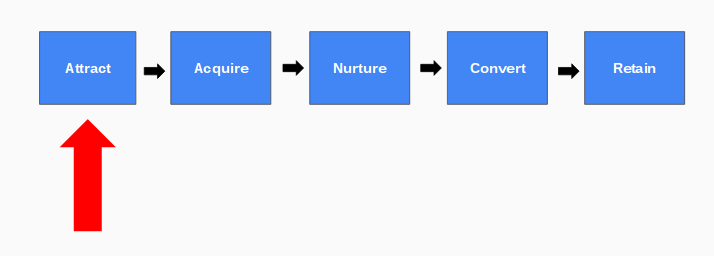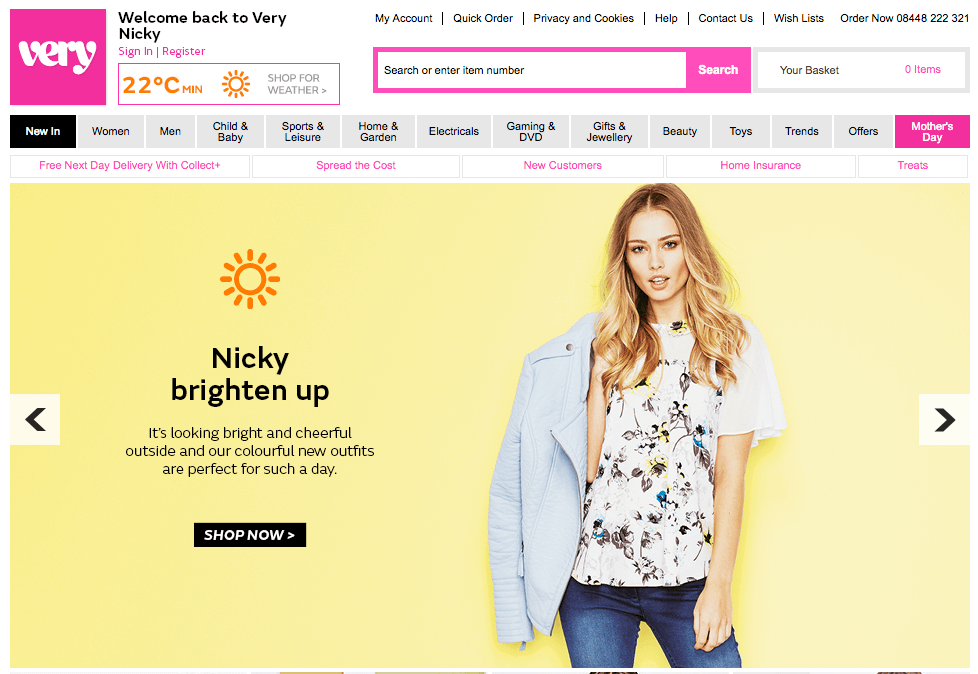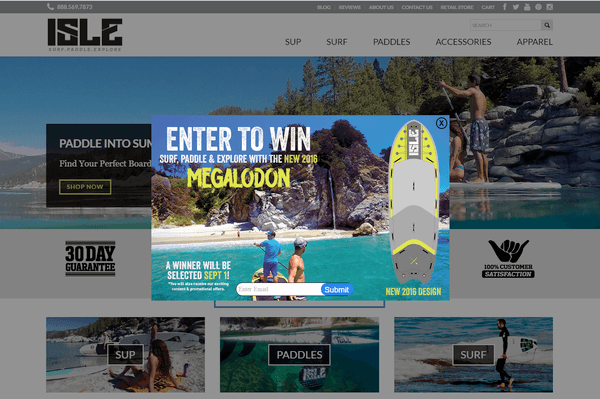Ecommerce Website Optimization: What You Ought to Know About Effective Messaging
As we laid out in our recent article about multiple niche marketing, marketing your product to people you THINK should be buying it as opposed to people who actually ARE buying it will only confuse your market and lose you potential sales.
Developing and marketing to your target avatars ahead of time will save you countless marketing and errors when it comes to ecommerce website optimization. This is why your website messaging can make or break your conversion rate.
Audiences are super-savvy these days and only getting more so – they’ll be able to tell in a glance if your site’s messaging is targeted to them or not.
Either they’ll make the connection, or they won’t. It’s your job (and hopefully your goal) to make sure that they do.
If visitors are finding your site, but quickly bouncing or you have customers, but want to convert more of them to repeat buyers….chances are you’re making one of these common mistakes.
Mistake #1: You Don’t Have Multiple Customer Avatars

If you’re going after multiple audiences, it’s important that the “attract” step (the first one) of your funnel be unique to each one. This begins with thorough avatar creation.
You need to figure out EXACTLY who you’re selling to. If you know it’s “women” or “mothers,” that’s a good first step, but not nearly specific enough and you’re probably not going to reach your target buyers.
For example, you can figure out several levels of your ideal customer avatar:
- Level 1: young urban mothers ages 21-30 living in major U.S.cities
- Level 2: young urban mother, age 24, lives in New York City, likes to shop at Lululemon
- Level 3: young urban mother, age 24, lives in New York City, likes to shop at Lululemon, works out at Soulcycle
And that’s just ONE avatar.
You can repeat the process for all of your avatars (ex: young urban mothers ages 21-30, new and expecting moms, moms over 30 with a high disposable income).
Having all of this laid out in front of you will enable you to market to them more directly.
Better yet, they’ll actually respond to your marketing. With enthusiasm.
Mistake #2: Your Ad Targeting Doesn’t Match Your Landing Page
Another common mistake is targeting one specific avatar in your ads, but directing them to a “general” landing page – or even worse – a page directed at a completely different avatar!
Don’t post an ad featuring a specific blue men’s button down and then lead your target to page showing a different shirt, a New Arrivals page, or the T-shirt category page.
The user clicked on a specific image ad – show them that image once they click through!
If your user can’t find the product or information he/she is looking for, they’ll become frustrated.
Nobody wants bad vibes between themselves and their potential customer because bad vibes don’t make sales.
Here’s an example of an ad that DOESN’T align to the landing page:
BaubleBar, a jewelry ecommerce brand, served me this ad via Facebook. I actually thought the personalized jewelry was pretty cool – something I would be interested in (so it seems their Facebook custom audience strategy is working).

But after clicking on the ad, here is the page I landed on:

Even after scrolling to the very bottom of this page I landed on (their “Best Sellers”), I didn’t see ONE of the pieces shown to me in the ad.
My attitude as a customer now has shifted from “Oh, cool, I think I like this!” to “Meh, they don’t have those cool initial necklaces, let’s get back on Facebook.”
Opportunity lost.
Ad dollars wasted.
Optimize each of your landing pages to meet your target avatar’s needs, and you’ll acquire AND retain more customers.
Mistake #3: Your Customer Doesn’t Know WHO Your Brand Is When They First Land On Your Site
Weak branding is a non-starter.
If customers are confused about who you are, why would they buy from you?
You need to communicate what value your business creates for your target avatars – in a glance. The way you describe your store to your investors, or your friends, even your elevator pitch should match what you’re saying on your website.
The first visual, headline, and bit of copy your customers see should tell them everything they need to know about who you are and what you can offer them.
Let’s look at a company that hits the nail on the head: Pura Vida Bracelets. There’s no mistaking what they sell and WHY they’re selling it in the first place.

Mistake #4: Your Site Messaging Is Too General & Dilutes Conversions
If your messaging is too general or vanilla, it can work against you. It’s important to differentiate yourself from your competitors and one way to do this is through personalization.
With solutions like optimization platform Optimizely, you can introduce personalization and A/B test different types of tailored experiences to find out what your customers respond to.
Additionally, if your ecommerce website has “account creation,” you can potentially personalize product recommendations, homepage product displays, remind users of previous purchase – all while they’re shopping your site in real time.

Mistake #5: Your Pop-ups Are Too General – Target by Referral Source!
Refining your messaging is all-encompassing, so that means it even trickles down to your popup text.
Having a “general” message works for some popups – but you can leverage your popup solution to speak more directly to your target avatar!
Lead capture platforms like Justuno (one we’ve partnered with) have a bunch of customization options and allow you to target your pop-up offers by referral source, times visited, type of visit, and more. So there’s no need try to create a “one size fits all” pop-up that covers all the ways visitors end up on your site.
A common practice with website messaging and pop-ups is to engage all traffic with the same messaging and call-to-action. This “shotgun approach” can be very effective. However, the messaging must be relevant to the visitor, otherwise your chances of getting a conversion are reduced.
The goal here is to increase the amount of people you pull into the “attract” step of your funnel, and refining your pop-ups helps. Relevance is the key to high converting pop-ups and there are different ways that we can target visitors to present more relevant messaging. Let’s take a look at some common ways marketers target visitors with pop-ups for increased traffic conversion and a better experience.
Time-Based Targeting
This is when a pop-up or website message is triggered based on the amount of time spent on a certain page. The ideal delay for a pop-up is within 15 seconds of the page load. Why 15 seconds? Over half of site visitors will leave your site within 15 seconds of arrival. This allows the visitor enough time to view your site, but also ensures that the pop-up will be seen by the majority of your traffic.
Traffic Source Targeting
One of the easiest ways to present relevant pop-ups to visitors is to present specific messaging based on the visitor’s referral source. You’re receiving traffic from organic search, email, social, paid ads, referrals, and potentially other campaigns.
You can treat all of this traffic the same and get some pretty good results. Or you can market to different sources in unique ways to substantially increase conversion rates and provide a better website experience.
For example, if your marketing on a brand-new channel and expect to have a lot of new traffic, showing these new visitors an opt-in to a giveaway or contest, is a much more attractive offer than a general newsletter subscription.
Let’s say you’ve built a brand new audience in Facebook with the goal of driving new traffic through ads.
You can target your traffic by source and make sure they’re seeing your giveaway / contest offer.
This has worked wonders for Justuno client, ISLE Surf & SUP. Check out their full case study here: How Isle Surfboards Grew Email List by 660% and Tripled Online Orders

Page-Based Targeting
Your website pop-up or messaging is most likely not going to be relevant to every site page. To ensure that you are reaching visitors with the right message, you can select which page(s) your pop-up will be displayed on. Some common use cases include displaying a specific pop-up on cart/checkout pages, presenting an offer on relevant product pages, and restricting a pop-up from triggering on a landing page with an existing form.
Again, this can be useful in ad campaigns as you may likely create specific product landing pages to correlate with your campaign.
If that’s the case, targeting by page can produce a great ROI for you by allowing you to get more granular with your messaging and speak directly to your target avatar.
What Are Your Next Steps in Fixing Your Messaging Mistakes?
We can show you step-by-step how to fix each of these five mistakes.
Sign up for our free workshop and learn how to leverage your existing website to convert more users to sales!







